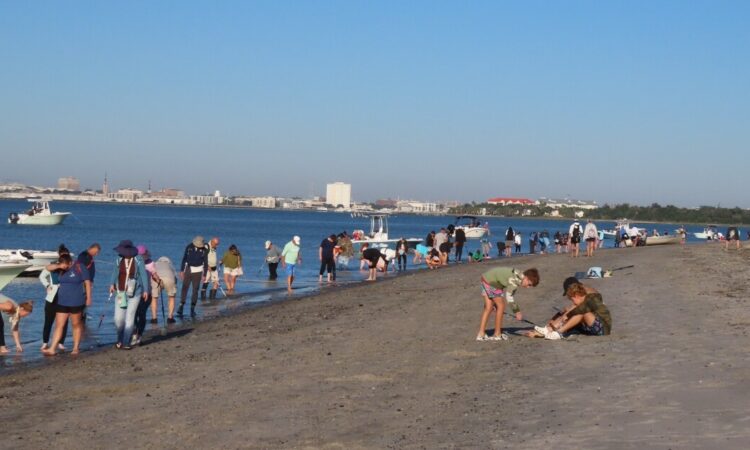
A sandy, shadeless, 32-acre island stretches out in the middle of the Charleston Harbor, inviting sea and shorebirds to safely nest and rest from long migrations. But it’s also inviting something else, humans.
But make no mistake. The island was built for birds.

Victoria Hansen
/
South Carolina Public Radio
Effectively immediately, the Department of Natural Resources is cracking down on people combing the beach for seashells and shark’s teeth. The agency is banning those who stop by boat from using metal detectors, digging, or otherwise excavating on the island. Come January, visitors will no longer be allowed to collect fossils.
“These protections are about more than preserving fossils or natural features,” says SCDNR Bird Conservation Coordinator Amy Tegeler.
“They’re about protecting an ecosystem that coastal birds depend on for survival.”
The island is a sanctuary for sea and shorebirds whose populations are rapidly declining due to development along the coast. It was rebuilt in 2021 after being washed away by numerous storms and hurricanes.
Shortly after, South Carolina Public Radio was invited to visit and witnessed baby oyster catchers emerging from their shells.
“Every nest, every chick, and every square foot of habitat matters,” says Tegeler.
The island is open to the public during the winter. But it closes during the summer, from March 15 through October 15, so birds can lay their eggs in the sand away from predators.
Now the Department of Natural Resources has extended the island’s closure until November 15th to further protect the birds. For the first time in eight years, brown pelicans began to successfully nest this year.
The island is also home to Black Skimmers, Gull-billed Terns, Least Terns, and American Oystercatchers.



